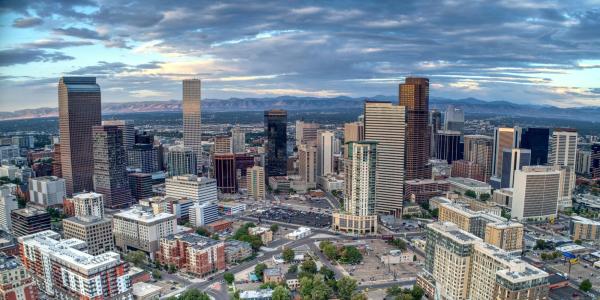
Protesters gather in Boston's Copley Square during a rally organized by Students for Fair Admissions. (Credit: CC image via Wikimedia Commons)
After two occasionally-contentious hearings on Oct. 31, the U.S. Supreme Court could be poised to ban colleges and universities nationwide from considering race in the admissions process—further restricting affirmative action in higher education across the United States.
Michele Moses followed the arguments in Students for Fair Admissions v. President and Fellows of Harvard College and Students for Fair Admissions v. University of North Carolina closely. She’s the author of Living with Moral Disagreement: The Enduring Controversy about Affirmative Action and a professor in the School of Education at CU Boulder. Moses has spent her career studying how arguments over affirmative point to deeper questions of morality and fairness in the U.S. and around the world.
Moses discusses her research on affirmative action and how the Supreme Court’s upcoming decisions could change the way colleges and universities look across the country.
The U.S. Supreme Court has heard a lot of cases over the years around affirmative action—Regents of the University of California v. Bakke in 1978 and Gratz v. Bollinger in 2003, for example. What makes these hearings different?

Michele Moses
The first difference is the makeup of the court. It's the first time we have seen so many justices so openly against race consciousness, and in almost any form. What’s also different in this case is that we have Asian American plaintiffs. Previously, plaintiffs have either been white men or women. Those cases didn’t end the way opponents of affirmative action hoped, so I think this is a concerted, strategic approach on the part of opponents of affirmative action.
How did we get to this point?
Edward Blum has been known for years as almost the face of this movement in concert with an organization called Students for Fair Admissions (SFFA). In this case, he and his team actively recruited plaintiffs. They put together websites. One of them was called Harvard University Not Fair. It featured a photo of an Asian American student and said: “Were you denied admission to Harvard? It might be because you're the wrong race.”
The strategy here is, in my view, centered around fomenting politics of resentment between different racial and ethnic groups. The argument SFFA is trying to make is that affirmative action for underrepresented groups—whether that's Black, Latinx or Native American students—results in Asian American students not being admitted.
Is that an accurate interpretation?
Based on my own research and scholarly work, to me, that is a pretty disingenuous way of going about achieving their policy outcomes. It’s not true that if you’re a qualified Asian American student and don’t get into a university like Harvard that it’s because of affirmative action.
Harvard University admits fewer than 5% of its applicants, and the lion's share of students who apply to Harvard are well-qualified. Many of those students have perfect SAT scores, perfect GPAs, etc. What the argument from SFFA tries to gloss over is that much more goes into college and university admissions than your test scores and your GPA.
So schools choose students based on a lot more than just those narrow qualifications. But why are schools looking at race, specifically?
The way I think about it is if you are an institution of higher education and care about meeting your academic and social mission, it's really important to have a student body that represents a wide array of diversity. People talk a lot about diverse viewpoints. Diversity certainly includes that. But it also includes racial diversity and ethnic diversity. And international students and students from lower socioeconomic backgrounds are also really important for creating vibrant and productive campuses.
Empirical research has borne this out for years and years: If you have more people with different backgrounds, different histories and different perspectives, they're going to bring different things to the table that will enhance the pursuit of truth and the production of knowledge, as well as teaching and learning.
Several states have already banned the consideration of race in college admissions, including California and Michigan. What have we learned from those states?
What we've seen in states that have made decisions to eliminate the consideration of race in college admissions is that it tends to exacerbate inequalities. In California, for example, the UCLA Civil Rights Project conducted a large study and found that admissions of underrepresented students have really declined since the state banned affirmative action in 1996.
Ignoring racial discrimination doesn't make it go away. It's still a problem. Universities in the states that have banned affirmative action have been trying other ways to create the diverse student body that they want to see on their campuses. But they haven’t found a solution.
You’ve said many times that arguments over affirmative action in higher education are about a lot more than just the nitty gritty of how schools pick their students. How so?
There’s an outsized attention to affirmative action in college admissions. Affirmative action is one very modest policy tool that colleges and universities have used to help them build these diverse, interesting and dynamic classes of students.
It is the minority of colleges and universities in the United States that even use affirmative action. I think the outsized focus on it reflects the profound political polarization in the United States right now and, in some ways, the state of our democratic society. People don’t agree on what to do about long-standing racism and its effects on important societal goods like the opportunity to pursue a college degree.



